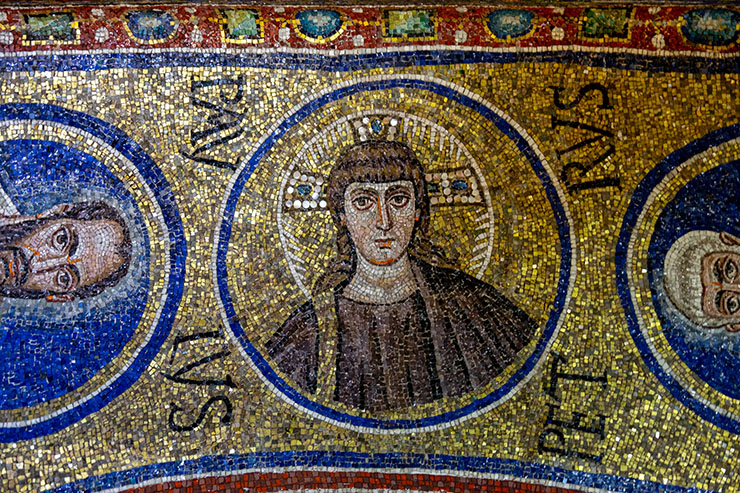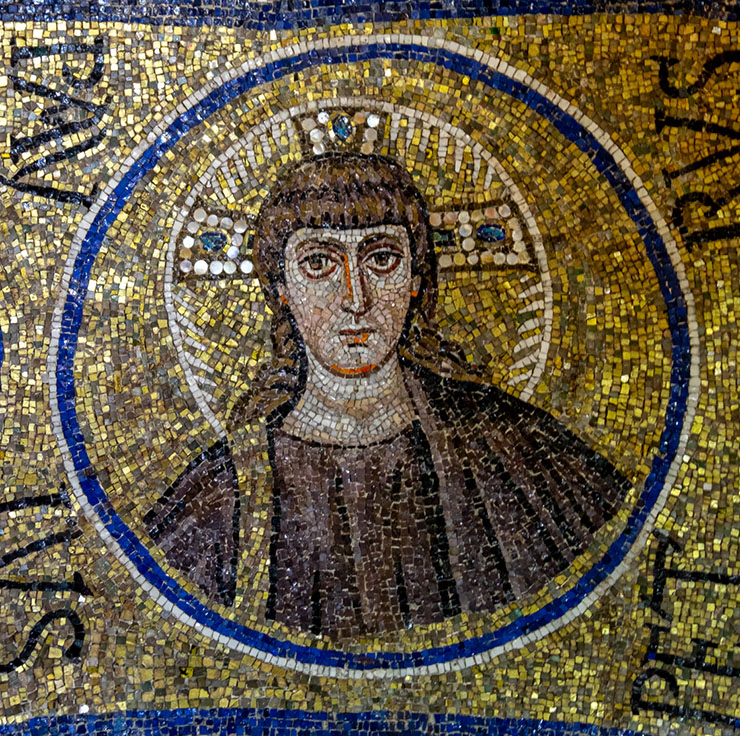حسام الدین شفیعیان
وبلاگ رسمی و شخصی حسام الدین شفیعیانحسام الدین شفیعیان
وبلاگ رسمی و شخصی حسام الدین شفیعیانChrist Pantokrators of Ravenna
Here we see Christ holding the scroll with Seven Seals. In the Book of Revelation, the Seven Seals are the seven symbolic seals that secure the book or scroll that John of Patmos saw in his apocalyptic vision. The opening of the seals of the document occurs in Revelation Chapters 5–8 and marks the Second Coming of the Christ. In John's vision, the only one worthy to open the book/scroll is referred to as both the "Lion of Judah" and the "Lamb having seven horns and seven eyes".
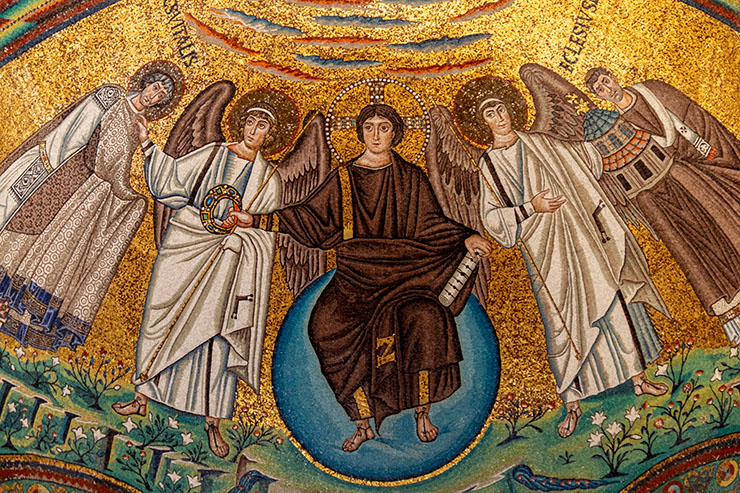
Here we see Christ in Glory at the Second Coming. From the latter part of the fourth century, a still beardless Christ begins to be depicted seated on a throne on a dais, often with his feet on a low stool and usually flanked by Saints Peter and Paul, and in a larger composition the other apostles. Here Christ is shown on a celestial throne represented as a ball of blue light. He is flanked by two angels a saint Vitalis, to whom the church was dedicated and a cleric presenting a model of the church.
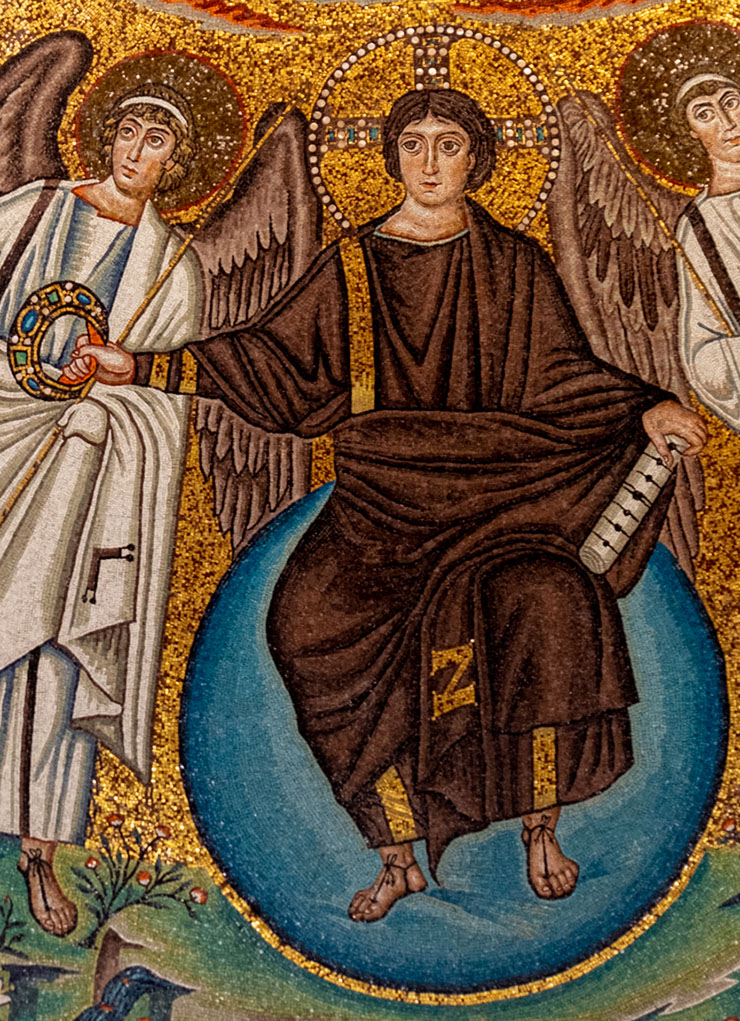
It does not appear that the entire interior of the church was completed with mosaics. The mosaics of the apse were repaired and restored several times in during Byzantine rule in Ravenna. The image of Saint Vitale was repaired along the lower third of his robes and the image the bearded Christ Pantokrator in the center of the apse arch was replaced in the 8th century due to an earthquake. Below you can see this image in the arch.
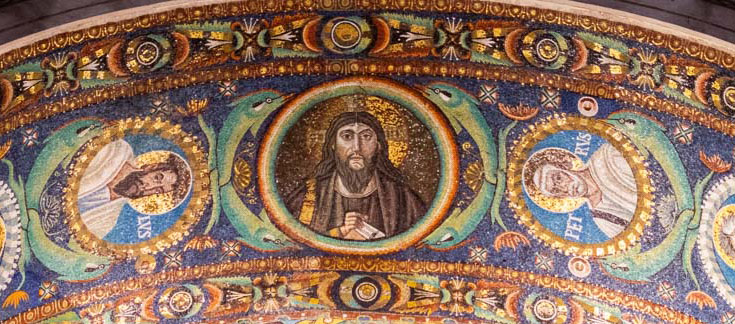
There are two arches with mosaics of Christ in the chapel. Above is the western arch. Christ is shown here between the Apostles James and Thomas. On the far right is Matthew.
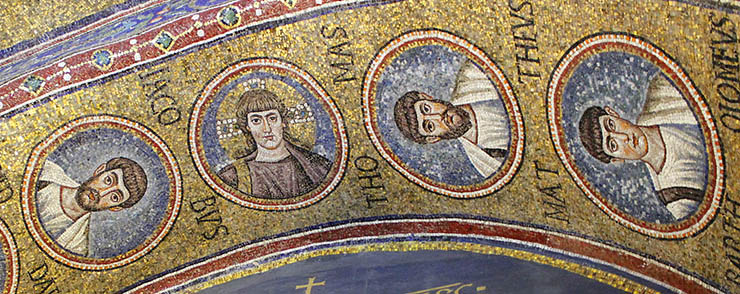
This image of Christ dates from the last years of the fifth century - almost 300 years earlier than the Pantokrator in the last picture - and is located in the Archbishop's Chapel on the first floor of the bishops' palace in Ravenna. The chapel was built by Peter II after he became archbishop in 495, a year after Theodoric's conquest of Ravenna. Peter, an Orthodox bishop, had a close relationship with Theodoric, the Ostrogothic king of Italy, despite his being an Arian heretic. The mosaics date from the original construction. This is the only surviving private chapel from Late Antiquity. It is small and isolated from the rest of Ravenna. It was possibly used as a baptistery as well as a chapel.
Above is Christ between the Apostles Paul and Peter in the eastern arch.
